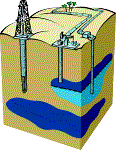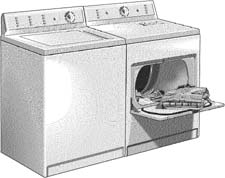WHERE IS NATURAL GAS FOUND?
The natural gas becomes trapped deep in the earth between layers
of rock and is removed by drilling wells and bringing it to the
surface. It is usually found near petroleum ( oil) underground.
Canada's natural gas mainly comes from British Columbia, Alberta
and Saskatchewan. In Saskatchewan most of the gas is located along
the western edge of the province (Beacon Hill, Kindersley and Hatton
areas).





